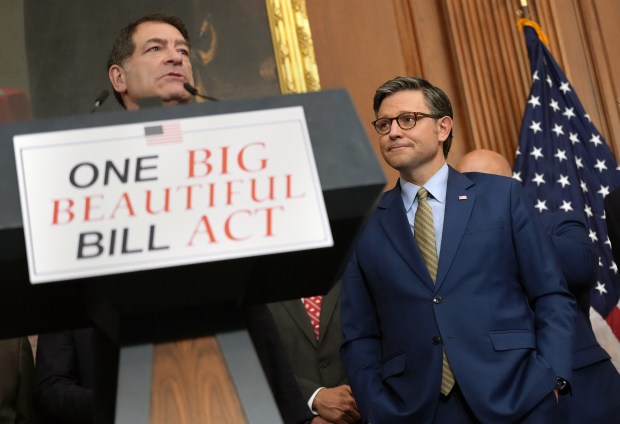True to form, Springfield waited until the final days of session to unveil sprawling legislation overhauling how the Chicago area governs, operates and funds its critical public transit systems.
Like many others keenly interested in this issue, we’re poring through the details and trying to come to an overall assessment. The governance changes especially are tricky, but the overarching goal of eliminating fiefdoms within a region that ought to be working together to help people get around is important. We’ll certainly weigh in on the particulars in due course.
But on two elements of this legislation we are in full-throated approval.
First is the emphasis on improving public safety on trains and buses, a problem that has plagued the “L” most directly and surely has hampered recovery of ridership to pre-pandemic levels. Tasking the area’s law-enforcement agencies with focusing on crime on the system is the right thing to do. Crucially, legislation would place sworn officers on buses and trains within a year of enactment, which in addition to hopefully enabling quicker response times when offenses occur would serve as a deterrent to would-be criminals in the first place.
So-called transit ambassadors would help passengers navigate the system and, more importantly, help those with mental health needs get to facilities that can assist them rather than riding the trains for hours on end.
Second is the creation of a single fare system, allowing passengers to pay their way on the same platform regardless of whether they’re riding the Chicago Transit Authority, Metra or Pace. That reform is long overdue and, we predict, will encourage greater usage of public transit throughout the region.
As we write, a funding proposal has surfaced in the state Senate to address the $770 million deficit for the region’s transit agencies stemming from the end to federal pandemic aid. More funding no doubt will be critical to getting public transit back on track.
Our view on whether this proposal strikes the right balance between rider fares and taxes or fees will have to wait for another day. As it stands, it’s clear there’s much opposition to the funding ideas offered late Wednesday night by state Sen. Ram Villivalam, D-Chicago, including from organized labor and DuPage County Board Chair Deb Conroy, like Villivalam a Democrat.
The uproar in Springfield over the eleventh-hour transit package demonstrates once again that these late-session scrambles over issues of such monumental importance are no way to run a policy railroad. We’ll see what emerges from this session, if anything.
But what matters most of all — more even than addressing the fiscal cliff, as important as that is — is ensuring there’s accountability for the inexcusable operational deficiencies that have been allowed to fester at the CTA in particular.
In Michigan, Democratic Gov. Gretchen Whitmer first won office in 2018 on a simple platform of “fixing the damn roads.” In northern Illinois, the corollary would be “fix the damn trains.” We understand that doing so is politically more challenging than the task that faced Whitmer, because decent roads are a statewide concern no matter where you live and public transit is mainly a northern Illinois issue.
Still, that’s what must happen. The trains must be fixed.
And here’s the bottom line: No matter how many dollars are thrown at the problem, the issue won’t be put to bed until riders are confident that when they get on the “L” they will be transported to their destination safely and on time.
All who ride the “L,” of course, have their own stories of how that basic standard hasn’t been met time and again. One account we heard, which occurred only last Sunday, took place on the Blue Line from O’Hare Airport into downtown, at around 5 p.m. A woman who clearly had mental health issues hovered over the female passenger with whom we spoke, calling her repeatedly by some unfamiliar name. Then the woman got close to the passenger’s face, hurled an epithet at her, and walked to a different part of the train.
This story won’t be unfamiliar to those who regularly ride that line. Many have experienced worse.
The Blue Line from O’Hare is the gateway to Chicago for many visitors to this city. Beyond being unacceptable and frightening, incidents like that — all too common — help give Chicago the national and even international image it’s obtained in recent years of being lawless and dangerous.
Transit reform isn’t optional if we care about the future of Chicago. We need to get it right. If that takes more time than the few days remaining in this spring session, so be it.
Submit a letter, of no more than 400 words, to the editor here or email letters@chicagotribune.com.




